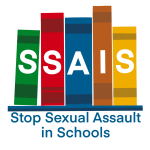Students and families experience the negative impacts of sexual harassment in schools every day. These toolkits and factsheets can help.
This toolkit helps parents and allies find out what their schools are doing about sexual harassment and assault.
Listen to these parents, relatives, and neighbors describe the toll sexual harassment takes on the K-12 students in their lives. Find out how to make your school safe.
Clinical psychologist and SSAIS advisory board member Jo-Ann Finkelstein offers ways parents and adults can address sexual harassment and assault with children.
Find out if your school has a Title IX policy, what it says, and if it meets federal guidelines. Use this information to improve the school climate. To investigate multiple districts, use this toolkit.
This guide helps you learn about your school’s definitions, policies, and reporting procedures, and offers direction for improving your school’s responses to sexual misconduct.
Students with disabilities face challenges that make them especially vulnerable to sexual harassment and assault. Find out how to support these students and keep them safe.
This factsheet explains students’ rights under Title IX, how to protect their privacy, the school’s responsibilities, how to get emotional support, and more.
Teachers and school staff play a key role in protecting students from sexual harassment in the classroom. Share this factsheet with teachers and staff in your schools.
An exemplary toolkit with standards, curricula, and resources created by the Michigan Organization on Adolescent Sexual Health (MOASH).
Parents have the power to help their children improve the culture of their schools. Find out what concrete steps they can take.
Learn about healthy and unhealthy relationships and how to set personal boundaries and respect others.
Learn about the types of sexual harassment and assault, how they impact students, and what can be done about it.
What is rape culture, how does it affect everyone, and how does victim blaming contribute to it? Learn how can we make positive change.
What are the types of acquaintance rape, how common is it, and what is its impact? Why are rape myths so destructive to individuals and to the school culture? Learn how to get help and make change.
Learn about the warning signs of abusive relationships. How common is dating violence and what are its consequences? Find out how to get help.
What are date rape drugs and how do they affect the body? Recognize the signs of being drugged and assaulted. Learn how to get help and stay safe in social situations.
What is sextortion, who can be trusted online, what to do if this happens? Learn how to avoid sextortion and how to get help.
Title IX protects students of all genders from sex discrimination, including sexual harassment and assault. Find out what schools must do to ensure gender equity.
What are the options for controlling privacy when reporting an incident of sexual harassment or assault? This is an essential presentation for minor students seeking help.
What are the options for people who have just experienced sexual assault? How can a sexual assault response organization assist? Watch a video of a student getting help from a sexual assault response center.
Learn why it’s important to know LGBTQ+ terms and identities. Find out how to support LGBTQ+ classmates. This presentation includes video and resources.
Learn how to identify activism goals, organize for action, and influence others.
What are the facts about sexual harassment and abuse of males? What is hazing? How is sexual assault different for people of different genders? How can we support male survivors and where can they get help?
Learn why students with disabilities are particularly vulnerable to sexual harassment and assault and how we can help them.
In this presentation created by the National Women’s Law Center, learn how students of color are uniquely impacted by sexual harassment. It includes an action plan to make change.
Do dress codes accomplish their intended purpose? Or do they end up pushing students out of the classroom? Find out in this presentation created by the National Women’s Law Center.
In this practical guide created by the National Women’s Law Center, learn how students and parents can advocate for reforming or abolishing school dress codes.
School employees sexually harass and abuse students far more often than is known. How does the abuse happen, what are the effects, and what can we do to prevent it?





























